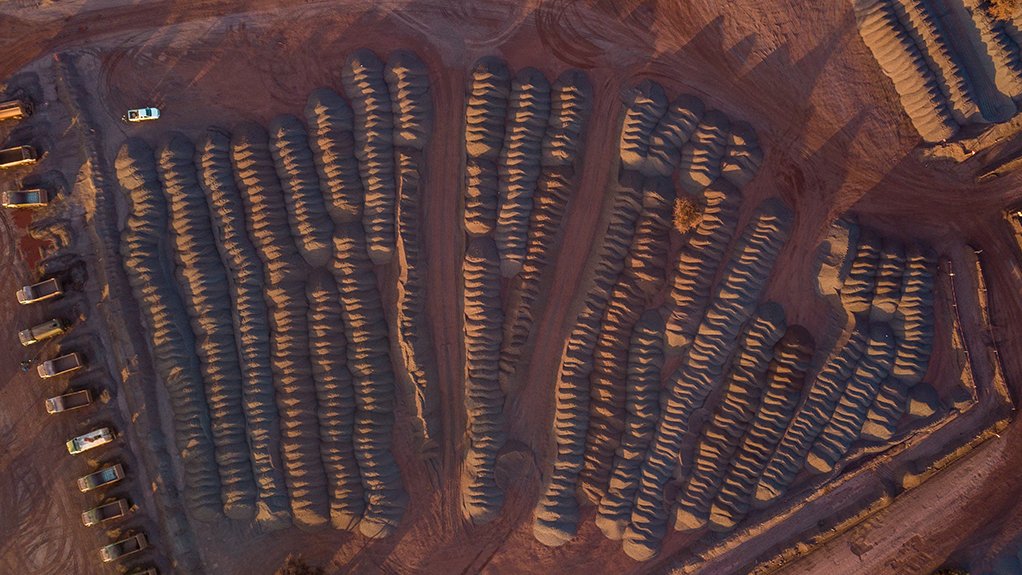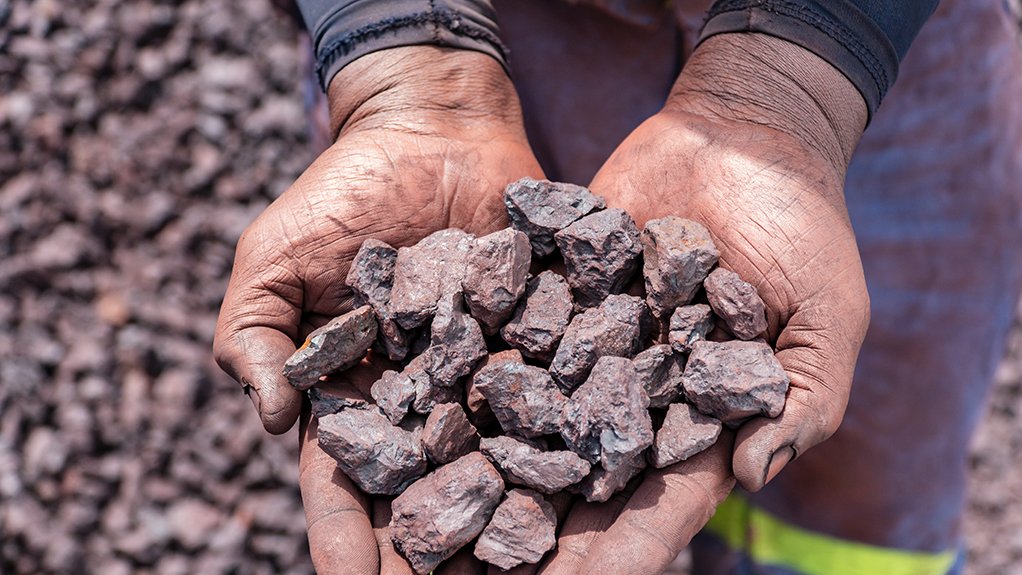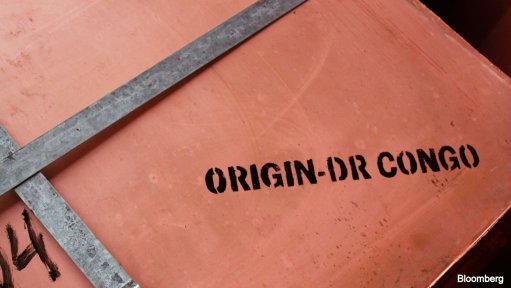Insufficient capacity impedes sustainability



IRONS IN THE FIRE Afrimat selectively acquires Junior miners’ product to improve its product quality and volume when needed
Photo by Afrimat
ALL OAK AND IRON BOUND Iron-ore demand should stay relatively stable
Photo by Afrimat
The future of iron-ore as a commodity remains good, as demand should stay relatively stable, but for junior and midtier miners the future appears limited, owing to the lack of logistics capacity to export iron-ore using the current iron export channel, says JSE-listed mining and materials company Afrimat COO Gerhard Odendaal.
The lack of capacity stems from slow or underinvestment in infrastructure development that creates extreme challenges in terms of the efficacy of the national transport and logistics system.
Odendaal explains that in the first instance junior and midtier miners need to become sustainable while there is a lack of logistic capacity on export channels: “To sustain iron-ore mining, majors could assist junior and midtier miners to create a secure and unassailable industry.”
The primary challenge, apart from the inaccessibility of logistic solutions for exports, is that there are no investments by new players in the development of large new mines or significant expansion projects by existing major miners, preventing the decision by government to commit to major investments in upgrades or capacity increases.
Odendaal says if there is no major and/or government involvement in improving circumstances, then junior and midtier miners will continue to produce negligible amounts of product, which limits their recognition in the cyclical index prices and the global market, which, in turn, adversely affects growth.
Although junior miners’ response to market conditions is rapid and they mostly operate during high-price periods – shutting down operations when prices are low – junior iron-ore miners also own resources of a mostly unknown quantum and quality, often extracting only the high-grade portion orebody on a selective basis, he explains.
Further, since junior miners’ capital investment is low, services are mostly obtained from subcontractors and rental equipment companies, resulting in diminutive exploration spend and deficient forward planning.
All of which suggests significant untapped potential for iron-ore juniors, of which some can be achieved through partnering with larger entities.
Odendaal cites the example of Afrimat’s operating in the midtier mining space, empowering junior miners with services and trade opportunities, “where their products are embedded into our wide range of products”.
Junior miners’ products are selectively acquired by Afrimat to improve the product quality and volume, when necessary, while a sliding-scale price approach is followed to enable juniors to share in any market upsides.
The company also assists in mine planning and short-term exploration to ensure resource optimisation, he adds.
Challenges Facing Juniors
In order to penetrate markets, junior miners would sell their products at lower-than-market prices to realise sales and income with preferential payment terms, while their owners in many cases extract the generated cashflow without wisely investing in planning, skilled staff and support functions. This prohibits the mine’s prospect for future growth.
“The failure rate of junior miners is quite high for this reason,” adds Odendaal.
If junior miners can develop some consistency and remain dedicated to growth, they can progress to midtier miner status, which, he explains, see operators mostly still owning smaller assets that are fully optimised and efficiently mined.
Additionally, junior miners would normally procure and operate at a faster pace, as their decision-making periods are generally shorter than those of major miners, but Odendaal cautions that this may result in juniors finding themselves on the higher side of the cost curve, which would hinder longer-term sustainability.
To become sustainable, junior and midtier miners needs to invest and own high-quality and larger-volume assets to be market competitive, and their operational costs need to be driven on the sheer scale, which will eventually promote them to become major miners.
Further, as majors own the largest portion of market share and allocation on logistic channels, which ensures that they operate on the lower side of the cost curve, junior and midtier miners could invest in relationships with majors with long-term offtake agreements and reputable clients to achieve the same opportunities, he adds.
Odendaal says that, for any junior or midtier miner to be successful in the current constrained environment, it needs to strategically align with a major, which requires sincere willingness from the junior to share its business and products with majors and vice versa for the major miner.
Additionally, junior and midtier miners need access to rail capacity allocation when their efficiency levels improve and they receive increased loan funding, as this will prove their development to majors, allowing for more investment and sustainability.
Growth initiatives and incentives from government must be planned, established and allocated to realise such strategic alignments. A cooperative model, where a few potential junior miners are identified and organised into such a model, with finance and significant rail allocation will reduce the challenges and improve broader sustainability, he concludes.
Comments
Press Office
Announcements
What's On
Subscribe to improve your user experience...
Option 1 (equivalent of R125 a month):
Receive a weekly copy of Creamer Media's Engineering News & Mining Weekly magazine
(print copy for those in South Africa and e-magazine for those outside of South Africa)
Receive daily email newsletters
Access to full search results
Access archive of magazine back copies
Access to Projects in Progress
Access to ONE Research Report of your choice in PDF format
Option 2 (equivalent of R375 a month):
All benefits from Option 1
PLUS
Access to Creamer Media's Research Channel Africa for ALL Research Reports, in PDF format, on various industrial and mining sectors
including Electricity; Water; Energy Transition; Hydrogen; Roads, Rail and Ports; Coal; Gold; Platinum; Battery Metals; etc.
Already a subscriber?
Forgotten your password?
Receive weekly copy of Creamer Media's Engineering News & Mining Weekly magazine (print copy for those in South Africa and e-magazine for those outside of South Africa)
➕
Recieve daily email newsletters
➕
Access to full search results
➕
Access archive of magazine back copies
➕
Access to Projects in Progress
➕
Access to ONE Research Report of your choice in PDF format
RESEARCH CHANNEL AFRICA
R4500 (equivalent of R375 a month)
SUBSCRIBEAll benefits from Option 1
➕
Access to Creamer Media's Research Channel Africa for ALL Research Reports on various industrial and mining sectors, in PDF format, including on:
Electricity
➕
Water
➕
Energy Transition
➕
Hydrogen
➕
Roads, Rail and Ports
➕
Coal
➕
Gold
➕
Platinum
➕
Battery Metals
➕
etc.
Receive all benefits from Option 1 or Option 2 delivered to numerous people at your company
➕
Multiple User names and Passwords for simultaneous log-ins
➕
Intranet integration access to all in your organisation



















